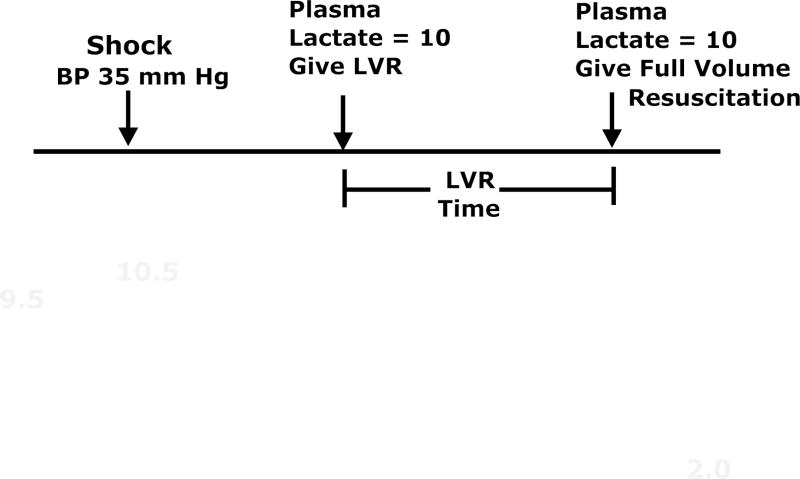Figure 1.
The Low Volume Resuscitation (LVR) protocol that was used in these studies. Arterial hemorrhage is used to maintain a low volume state (30–35 mm hg) until the plasma lactate reaches 9–10 mM. At that time, a low volume resuscitation solution is given, which temporarily reduces plasma lactate (due to dilution and increased perfusion) and increases arterial blood pressure. When lactate again reaches 10 mM, full resuscitation is started with 1 volume of saline containing 30% of the washed red cells that were hemorrhaged. The time from the start of the LVR solution until the start of the full resuscitation solution is called the LVR time and it represents the tolerance of the patient to the low volume state or the maximum amount of time that a patient can safely remain in the low volume state until more definitive medical care and full resuscitation can be started. The LVR time was a key outcome variable for these studies.

